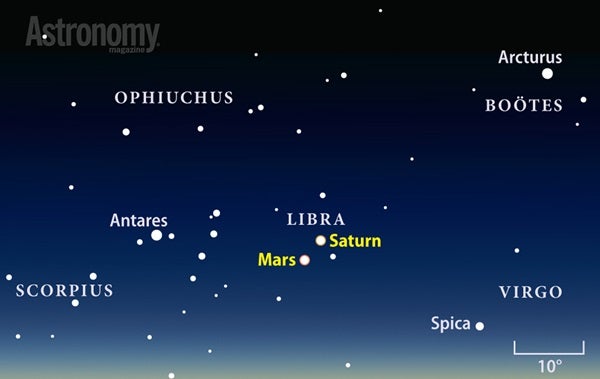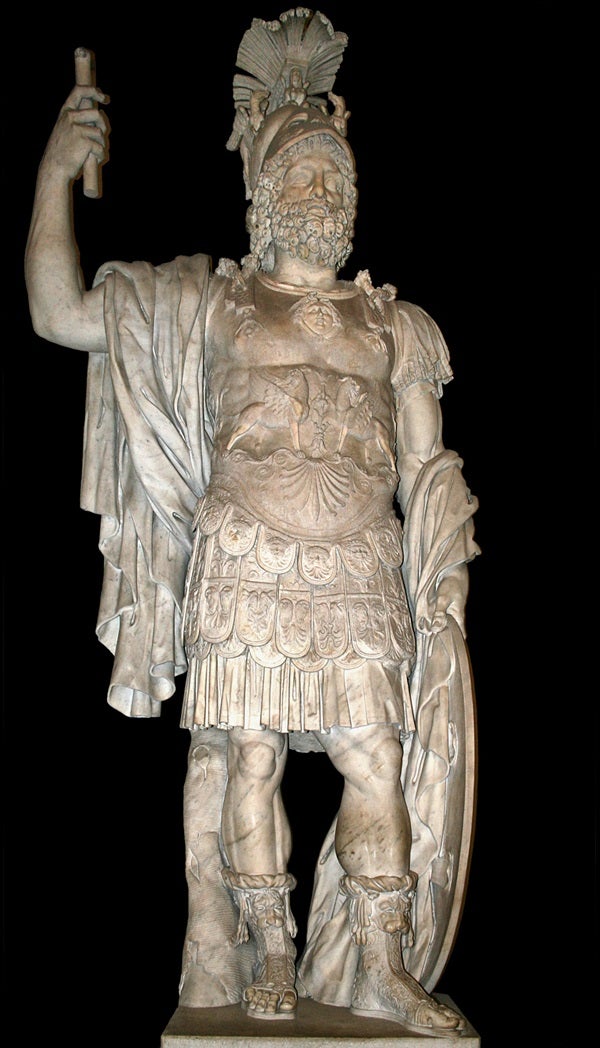From gold to red
This past April, Mars was at its closest and brightest for the year. It appeared more golden than red when highest in the sky. But the fact is, Mars only looks ruddy under two circumstances. When it lies near the horizon, Earth’s atmosphere reddens its natural light, the same way the Sun reddens at sunset. When Mars lies far from Earth, the planet’s shrunken disk concentrates the warmth of its light.
Humanity has long recognized the Red Planet’s color shifts. Ancient Romans revered Mars not only as the protector of its people (the scarlet god of war) but also as the guardian of their life-sustaining crops (the auric god of agriculture). One easily can envision a golden Mars close to home (Earth) looking over the nation’s crops and then turning red as it marches away to fight in a distant battle.
The red supergiant star Antares also shifts its color as it swells and fades in apparent brightness — though much more subtly and for a different reason. Antares is an irregular variable star that changes its brightness by tenths of a magnitude over a period of years. When brightest, Antares looks sunburst-orange; when faintest, it appears fiery red. Perhaps because of this color shift and its conjunction with Mars, the Greeks perceived the two as competitors: Antares derives from the Greek Ant-Ares, meaning the “Rival of Ares (Mars).”
The ancient Chinese, on the other hand, saw Antares as an essential agricultural star. Its red color is said to have inspired Sui-Jen (the Chinese Prometheus) to discover fire, which the Chinese used to mark the change of seasons. As Deborah Lynn Porter explains in her book From Deluge to Discourse: Myth, History, and the Generation of Chinese Fiction (State University of New York, 1996): “Thus the spring appearance (rising) and the autumnal disappearance (the heliacal setting) of Antares signaled for the agricultural community the time when ‘the fires should be brought out and brought in.’ ”
Ancient Romans also associated golden Saturn with the god of agriculture and fertility. Saturn the deity is said to have taught farming to his people and ushered in the golden age of harmony and abundance. Saturn’s wife, Ops (Rhea), was the patroness of this time of plenty, and each August 25, a celebration was held in her honor. The familiar word opulent has its roots in this goddess’s name.
Arcturus, yet another golden object, is the grandson of Demeter, the Greek goddess of agriculture who the Hellenic people believed made the crops grow each year. By the time of the autumnal equinox, the straw star is poised to set beneath the western horizon — a visual reminder that the harvest is ripe, time to “put in the sickle.”
Farther yet
Compare the color of all four objects individually with the virginal purity of brilliant Vega, which blazes overhead. Record the results. Now look at the two planets. Does the red of Mars cause Saturn to have a warmer hue and vice versa? Finally, does Mars appear dimmer than Saturn because of its less brilliant color? As always, send your thoughts and results to sjomeara31@gmail.com.












